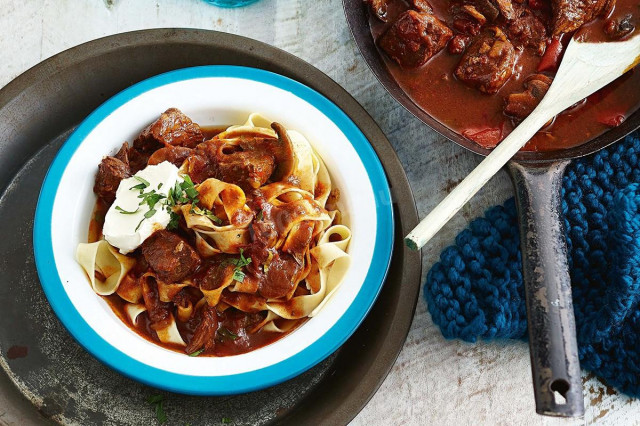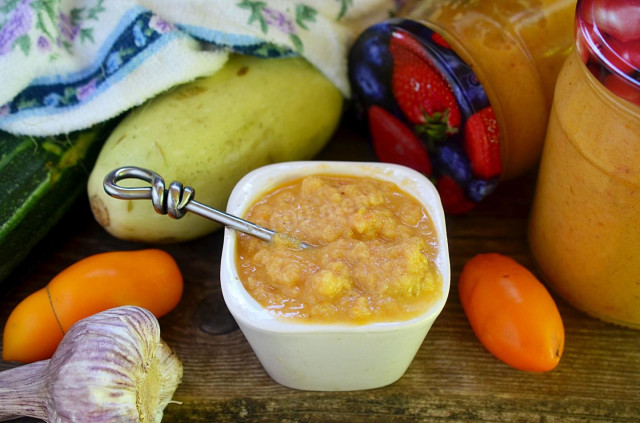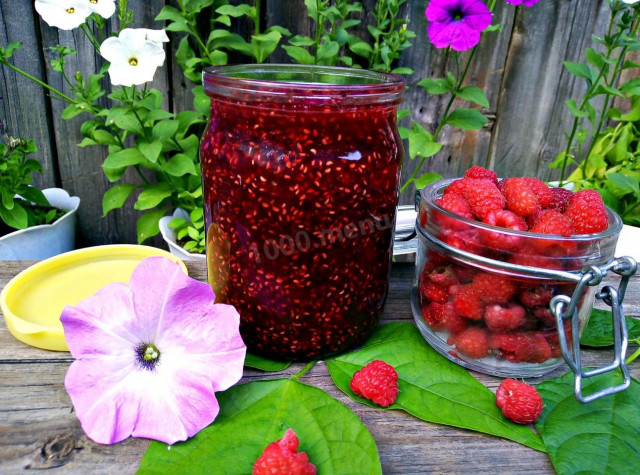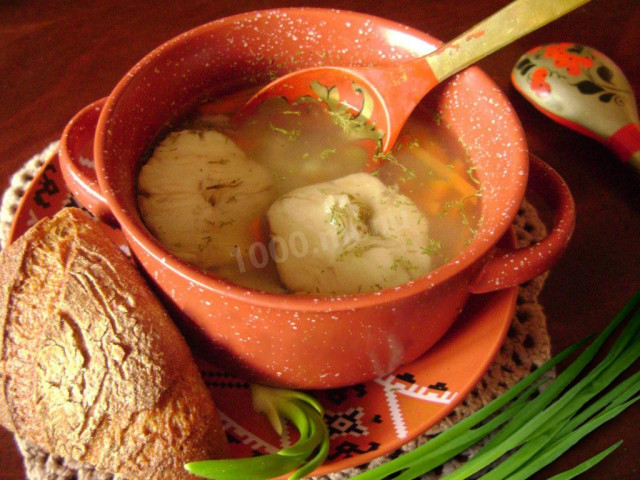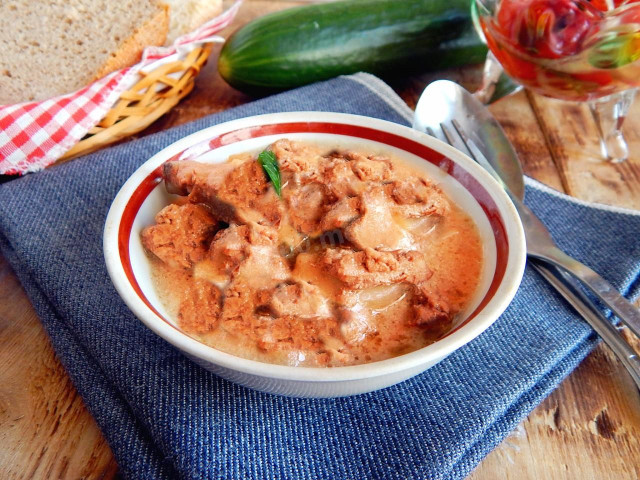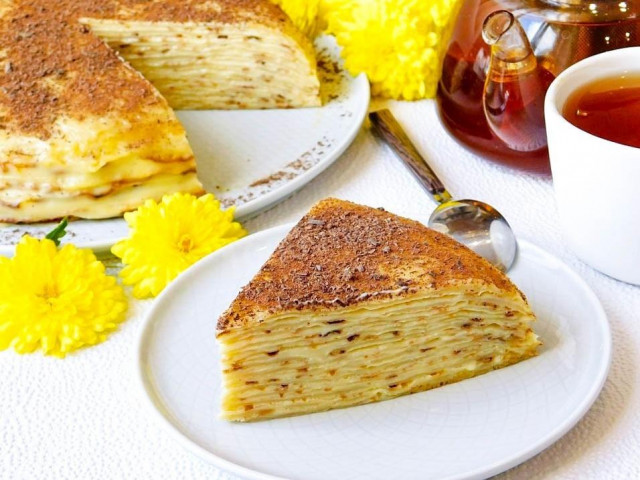Composition / ingredients
Cooking method
Beef is a rather complex meat that needs to be chosen correctly. When it comes to goulash, you should not save money - we prefer tenderloin or pulp. After washing and drying the piece with dry towels, we rid it of films and streaks.
Slicing is the second important stage, on which depends whether the goulash will melt in the mouth or during dinner you will have to make efforts to chew. It is necessary to cut the meat from a large piece with a large circle, as for chops, and only across the fibers. After that, we cut each circle into small pieces.
In a large bowl, combine the properly chopped beef with flour. Mix well so that each piece is covered with it from all sides. This will ensure that the meat is instantly baked and the juice is preserved inside the pieces, which means that they are soft.
Preheat the frying pan with vegetable oil to a red-hot state. Fry the prepared beef in small portions, stirring constantly and ensuring the same degree of roasting on each side.
As soon as all the meat is fried, return it back to the pan, add chopped champignons, finely chopped garlic, onion, diced and bell pepper. Simmer, stirring constantly, until the onion becomes transparent and soft.
Add tomatoes in their own juice (if they are whole, they need to be pre-cut into several parts) and broth, simmer over low heat for 20-30 minutes - until the beef becomes soft and does not fall apart when pressed with a fork. It may take a lot more time - it all depends on the quality of the meat. In the process, add salt to taste and paprika to the goulash.
While the beef is getting tender and soft (towards the end of cooking, so that the pasta is not cold), let's start cooking pasta. Optionally, you can choose any type of paste. So, boil water in a large saucepan. Add salt and pasta to boiling water, stir well, cook until ready. Discard the finished spaghetti in a colander, rinse with cold water, spread on plates. Add beef goulash, season with a small amount of herbs and a spoonful of sour cream and serve to the table.
Everything is ready!
Calorie content of the products possible in the composition of the dish
- Onion - 41 kcal/100g
- Tomatoes - 23 kcal/100g
- Melted beef fat - 871 kcal/100g
- Fat beef - 171 kcal/100g
- Lean beef - 158 kcal/100g
- Beef brisket - 217 kcal/100g
- Beef - okovalok - 380 kcal/100g
- Beef - lean roast - 200 kcal/100g
- Beef shoulder - 137 kcal/100g
- Beef - ribs - 233 kcal/100g
- Beef - ham - 104 kcal/100g
- Beef - tail - 184 kcal/100g
- Boiled ham - 269 kcal/100g
- Beef corned beef - 216 kcal/100g
- Sour cream of 30% fat content - 340 kcal/100g
- Sour cream of 25% fat content - 284 kcal/100g
- Sour cream with 20% fat content - 210 kcal/100g
- Sour cream of 10% fat content - 115 kcal/100g
- Sour cream - 210 kcal/100g
- Sweet pepper - 27 kcal/100g
- Pasta, premium, fortified - 337 kcal/100g
- Pasta, premium, dairy - 309 kcal/100g
- Pasta, premium grade, egg - 342 kcal/100g
- Pasta made from flour of the 1st grade - 333 kcal/100g
- Pasta made of flour in / with - 338 kcal/100g
- Boiled pasta - 135 kcal/100g
- Pasta - 338 kcal/100g
- Champignons - 24 kcal/100g
- Garlic - 143 kcal/100g
- Whole durum wheat flour fortified - 333 kcal/100g
- Whole durum wheat flour, universal - 364 kcal/100g
- Flour krupchatka - 348 kcal/100g
- Flour - 325 kcal/100g
- Vegetable oil - 873 kcal/100g
- Salt - 0 kcal/100g
- Water - 0 kcal/100g
- Paprika - 289 kcal/100g
- Fresh frozen soup greens in a package - 41 kcal/100g
- Greenery - 41 kcal/100g
- Meat broth - 34 kcal/100g

